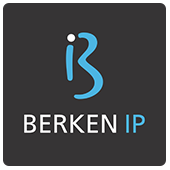
ChatGPT, Gemini, and Claude: The Intellectual Property Challenges Posed by Artificial Intelligence
When we think of generative artificial intelligence, platforms like ChatGPT, Gemini, or Claude often come to mind—with their impressive ability to draft text, generate responses in record time, create images, or translate with near-human fluency, among many other functions. But what we see is just the tip of the iceberg. Behind every interaction lies a complex infrastructure of massive datasets, advanced algorithms, and millions of trained parameters with significant economic and strategic value for these platforms. In the world of artificial intelligence, the processes, datasets, and architectures that make it possible are key resources to be protected as intangible assets.
In the early years of the modern AI boom, a culture of openness prevailed. Researchers shared findings, datasets, and open-source models. However, this mindset shifted with the rise of commercial interest and the growing need for legal protection of high-impact developments. Today, leading companies in the field are choosing not to disclose technical details of their most sophisticated models, marking a move toward confidentiality as a strategy to defend their value.
Ilya Sutskever, co-founder and Chief Scientist at OpenAI, admitted that openly sharing advances in artificial intelligence was a mistake. Although some of the datasets used to train models like GPT-4, Gemini, or Claude come from the open web, many include licensed content that remains undisclosed due to intellectual property and privacy concerns.
Adding to this is a growing challenge: the use of protected content without consent to train models. Millions of texts, images, and creative works have been used without authorization from their authors. In the U.S., artists have sued companies such as Stability AI and Midjourney. In 2023, The New York Times filed a lawsuit against OpenAI and Microsoft for the unauthorized use of its journalistic archive, arguing that these models are now capable of reproducing and directly competing with protected content—undermining entire business models.
In this new landscape, intellectual property is facing structural tensions. Patent applications related to AI have surged—with IBM, Microsoft, and Samsung leading the way—but many struggle to meet current eligibility criteria. In July 2024, the United States Patent and Trademark Office (USPTO) updated its guidelines, clarifying that:
- Patent claims that describe specific hardware components or practical applications are more likely to be accepted.
- Purely abstract ideas—such as methods of organizing information or mental processes—are not patentable, as they are not considered inventions.
- Applications that involve model training with real-world technological impact (e.g., improvements in medical treatments) are viewed more favorably.
While generative AI is reshaping the global technological and economic landscape, the legal system is still adjusting its frameworks to keep pace with an unprecedented technological revolution.
In this context, having professional advice to manage intellectual property with a global and strategic vision is essential for navigating this environment and transforming knowledge into real, sustainable value. It requires an interdisciplinary and deeply contextual perspective—one that combines legal, technical, and strategic considerations. It’s not just about protecting assets, but understanding how they integrate into business models, how they are defended in potential disputes, and how they can be leveraged in highly competitive global markets.
Supporting innovation with solid intellectual property structures will be key to turning technological development into long-term sustainable advantages.
Emilio Berkenwald
Latest Posts
Simplification of the trademark system: an opportunity for business and investment in Argentina
In the professional practice of trademark law, we emphasize this in every consultation with entrepreneurs, SMEs, and large companies: trademark protection...
Towards a new balance between human creation and AI
Artificial intelligence has become a central part of our daily lives. It generates texts, images, melodies, and even contributes to the development of...
